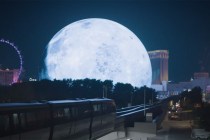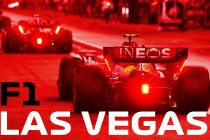Driver, designer MacLaren rose to fame in Can-Am series
It is virtually unthinkable in today's mega-million-buck world of Grand Prix auto racing that any of its talented, ambitious drivers could launch his own race team ... and design and compete in his very own car.
However, Bruce McLaren not only accomplished this feat four decades ago, but the company he founded continues to be one of the more successful organizations in Formula One, despite the fact that its founder died in 1970 at the tender age of 32.
In his all-too-brief life, McLaren managed an impressive list of successes. His European driving career began while he was barely into his 20s and his first win came at age 22 at the 1959 United States Grand Prix. Seven years later, the talented New Zealander had formed his own team and was driving in a chassis built by his company, Bruce McLaren Motor Racing Ltd. The 1968 Belgian Grand Prix would mark the site of McLaren's one and only victory piloting his own car.
Between running his race teams, designing both Grand Prix and Indianapolis customer cars and competing in both the Canadian-American Challenge Cup series and Formula One, McLaren also found time to help develop the Ford Motor Co.'s assault on one of the world's most prestigious motor racing events: the 24 Hours of Le Mans endurance race held in France. In fact it was McLaren who, along with driving legend Dan Gurney, piloted a GT40 to victory in 1966, Ford's first on this fabled circuit.
In North America, Bruce McLaren's name and reputation might have been almost unknown were it not for Can-Am, a short-lived racing series (1966-'74) that produced some of the wildest and most exhilarating competition ever seen. Highly experimental in nature, the series allowed purpose-built sports cars to run with up to eight liters of displacement (about 480 cubic inches), not to mention nearly unlimited power.
Beginning in 1967, fans had grown accustomed to watching McLaren and his running mate, fellow New Zealander Denny Hulme, beat nearly all comers in the series. Can-Am quickly became affectionally known as "The Bruce and Denny Show," with one driver or the other usually taking the checkered flag, including all 11 contests in 1969, the team's most successful outing. Although the results had become predictable, the sights, sounds and vibrations put out by these Can-Am beasts would literally take your breath away. The series attracted some of the world's most talented drivers who, in turn, brought out the fans by the thousands.
The simple experience of being a spectator was nothing short of incredible. As a young man, I was fortunate enough to have attended a 1970 race held at Mosport Park near Toronto, Canada, and recall positioning myself on a hill overlooking Turn Three, waiting for the event to begin.
The slow-moving train of about 20 midengined cars made a deafening sound during the warm-up lap, but when the race began, the ground literally trembled as the shock waves from the car's monster motors penetrated the earth's crust. Nearby, a trio of young children who had accompanied their parents, screamed in utter terror.
The two bright orange Chevrolet-powered McLaren M8Ds (nicknamed the Batmobiles for their wedge-shaped appearance) competing on that warm day in June led from wire to wire. Sadly, though, the man I had come to watch was not there to take the checkered flag. Bruce McLaren had died in England two weeks before while testing the M8D. Although it was a pleasure to watch Dan Gurney win that day (he and Englishman Peter Gethin drove for the team that year), the victory was a bittersweet moment.
Although the decision was made to withdraw Team McLaren after the 1972 campaign to concentrate on Formula One, several other private entries kept the brand alive and consistently winning for another two years until rule changes forced all McLarens from active competition.
Naturally, the success of the McLarens on the track led to several orders from other teams desperate for some of the McLaren magic, thereby substantially adding to the company's coffers.
Since his death, and under the leadership of men such as Teddy Mayer, Ron Dennis and supported by a host of talented engineers, designers, mechanics and drivers, McLaren race cars have remained competitive on the world's Grand Prix circuits, capturing numerous titles along the way.
The results are a fitting tribute to this quiet man who saw no limits to the goals he set for himself, achieving much in life and honored many times over in succeeding decades.
Malcolm Gunn is a feature writer with Wheelbase Communications. He can be reached on the Web at www.wheelbase.ws/mailbag.html. Wheelbase Communications supplies automotive news and features to newspapers across North America.














